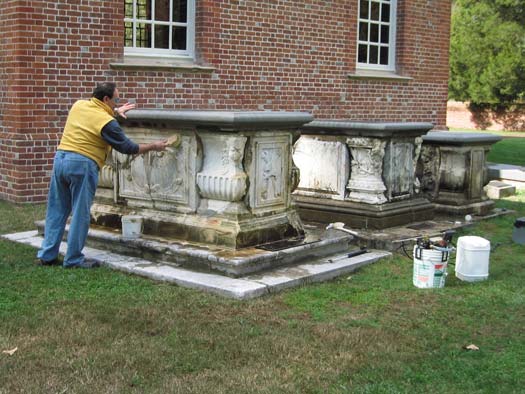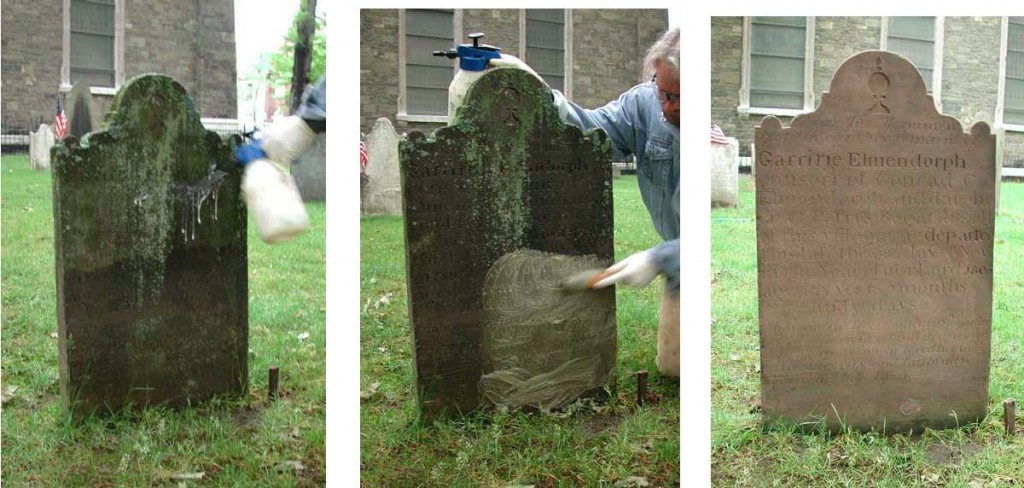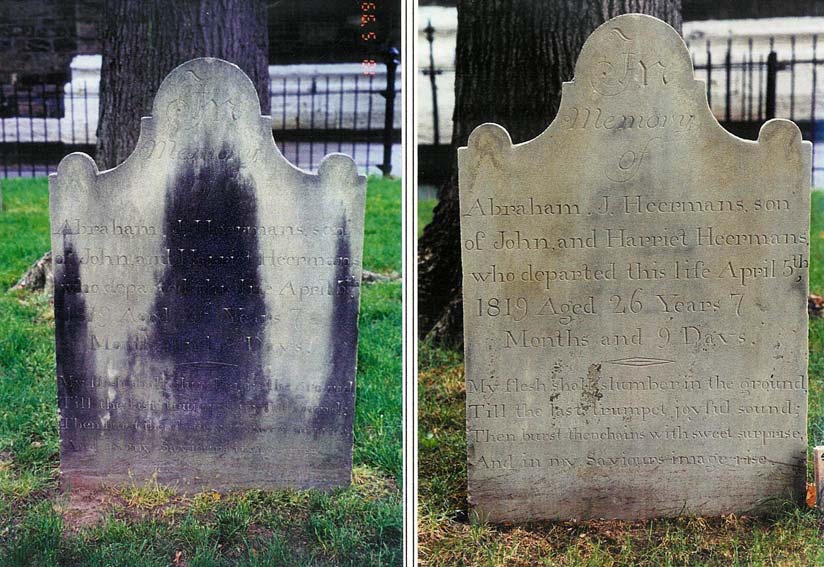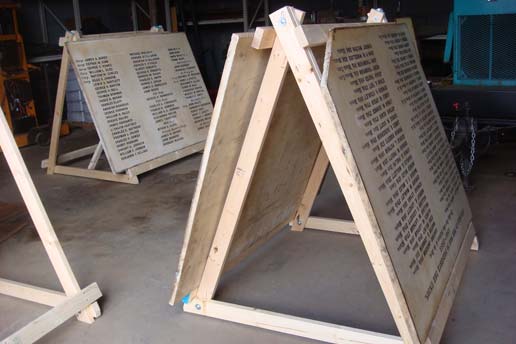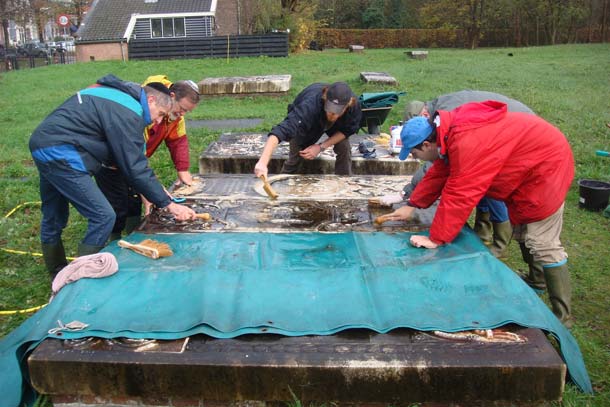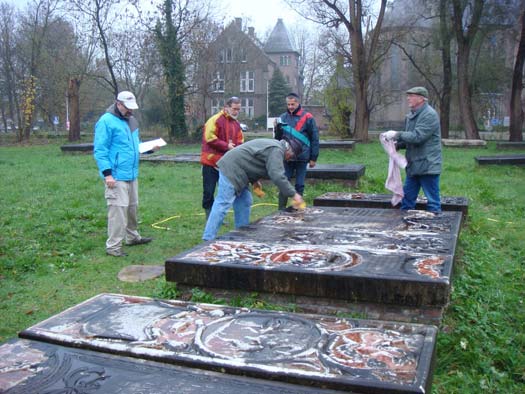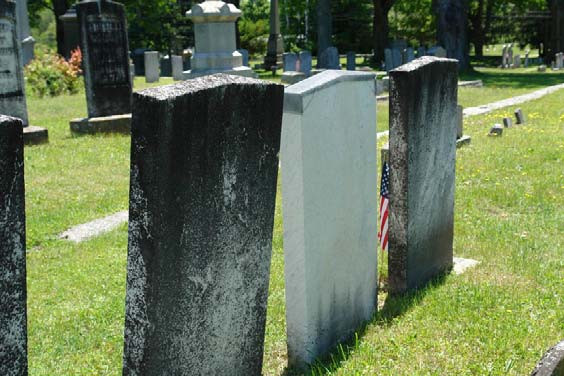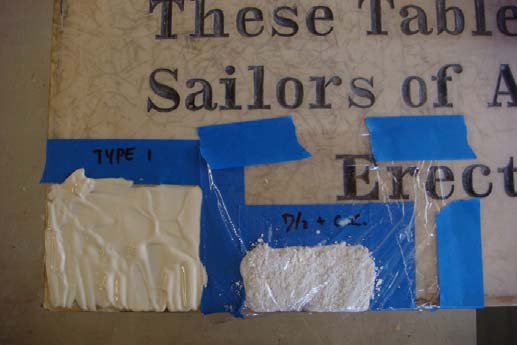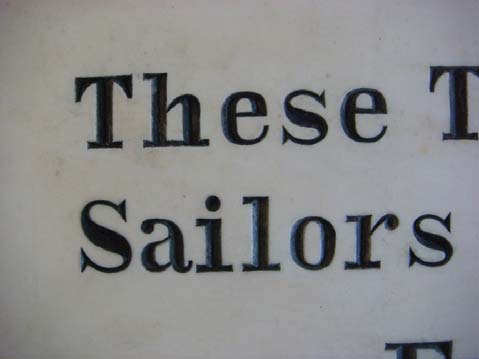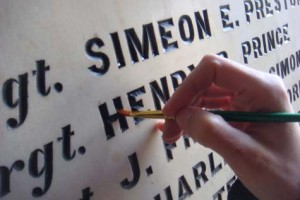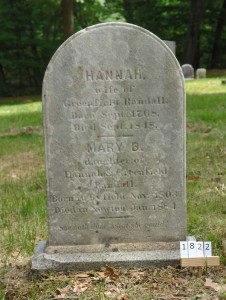
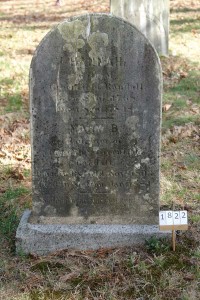
The goal of cleaning is not to return the monument to a “like new” appearance, but to remove particulate soiling, staining and biological growth that may interfere with successful restoration.
In most situations, cleaning is done prior to other treatments.
Removal of biofilm is with an aqueous antibacterial solution that also aids in the removal of algae, fungi and other organisms.
After application and scrubbing with soft brushes, surfaces are fully rinsed with water.
No wet cleaning is done when the temperature of the air or of the stone surface will be below 40 degrees Fahrenheit, or when there was a risk of freezing within 48 hours.
Failed adhesives, mortars and pins are carefully removed before proceeding with new conservation treatment. Mechanical removal is done with hand tools and smaller power tools.
Testing antibacterial solutions, Beth Haim Cemetery, Ouderkerk aan de Amstel, Netherlands 2009
